The idea that non-life cannot create life is a common creationist claim. It stems from the fact that we CURRENTLY only see life reproducing from other life. Abiogenesis is the idea that life arose spontaneously from the inorganic chemistry of the prebiotic Earth billions of years ago. As with every hypothesis (and this IS a hypothesis, not yet a theory), one must ask, “If this explanation is true, what evidence should we expect to find?” Four billion years ago, the Earth’s atmospheric and surface conditions were dramatically different from what they are now, so we wouldn’t expect to see abiogenesis occurring today. But what we WOULD expect to see is that prebiotic conditions should be able to create the basic building blocks of life.

So researchers did exactly that. They used a reducing atmosphere—containing ammonia, methane, carbon dioxide, hydrogen, hydrogen sulfide, water, etc.—and combined it with the expected temperatures, atmospheric electrical activity and ultraviolet light of an early Earth, and let them “cook” for a while. They found that even under a wide variety of different prebiotic conditions, it only takes a few days to spontaneously form dozens of the complex organic molecules essential for life. The repeated heating, cooling and irradiation of these molecules, as would be expected on a prebiotic Earth, can also cause the spontaneous formation of ribonucleotides. And ribonucleotides exposed to certain natural clays can spontaneously assemble into strands of RNA. Not only is RNA capable of self-reproduction, which is a fundamental requirement for life, but it’s very close in structure to DNA, which is the genetic blueprint of almost all life. Furthermore, the most primitive life on Earth is actually based on RNA, so finding a natural pathway to the formation of RNA is a huge step. Not only that, but simple fatty acids that also form naturally in prebiotic conditions AUTOMATICALLY assemble into structures resembling cell membranes. And under the right conditions, DNA inserted into those cell membrane-like structures can successfully replicate.

This does not mean we have figured out the entire process that led to the formation of the first life—at least not yet. But since all of the critical initial steps occur automatically under completely natural conditions, this is powerful evidence in support of abiogenesis. And keep in mind that nature had a MASSIVE number of these “chemistry experiments” going on all over the planet for hundreds of millions of years before life evolved. That can turn an extremely unlikely individual event into something almost certain to occur—although the evidence supporting abiogenesis so far shows that the odds are not nearly as long as creationists claim.
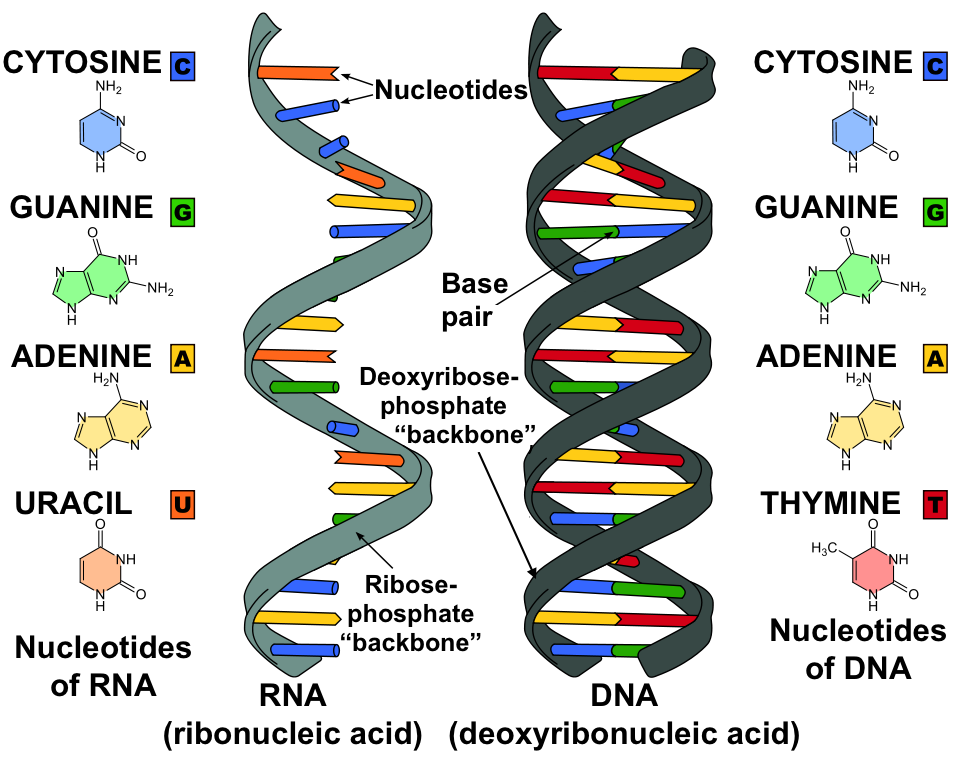
Meanwhile, the evidence does not support the creationist claim that all life was created by a divine creator over the course of a week 6,000 years ago (YEC) or in stages over billions of years (OEC). At best, those creationists find some evidence that is somewhat compatible with YEC or OEC, but that ignores the fact that the naturalistic explanations are FAR better supported and FAR more parsimonious.
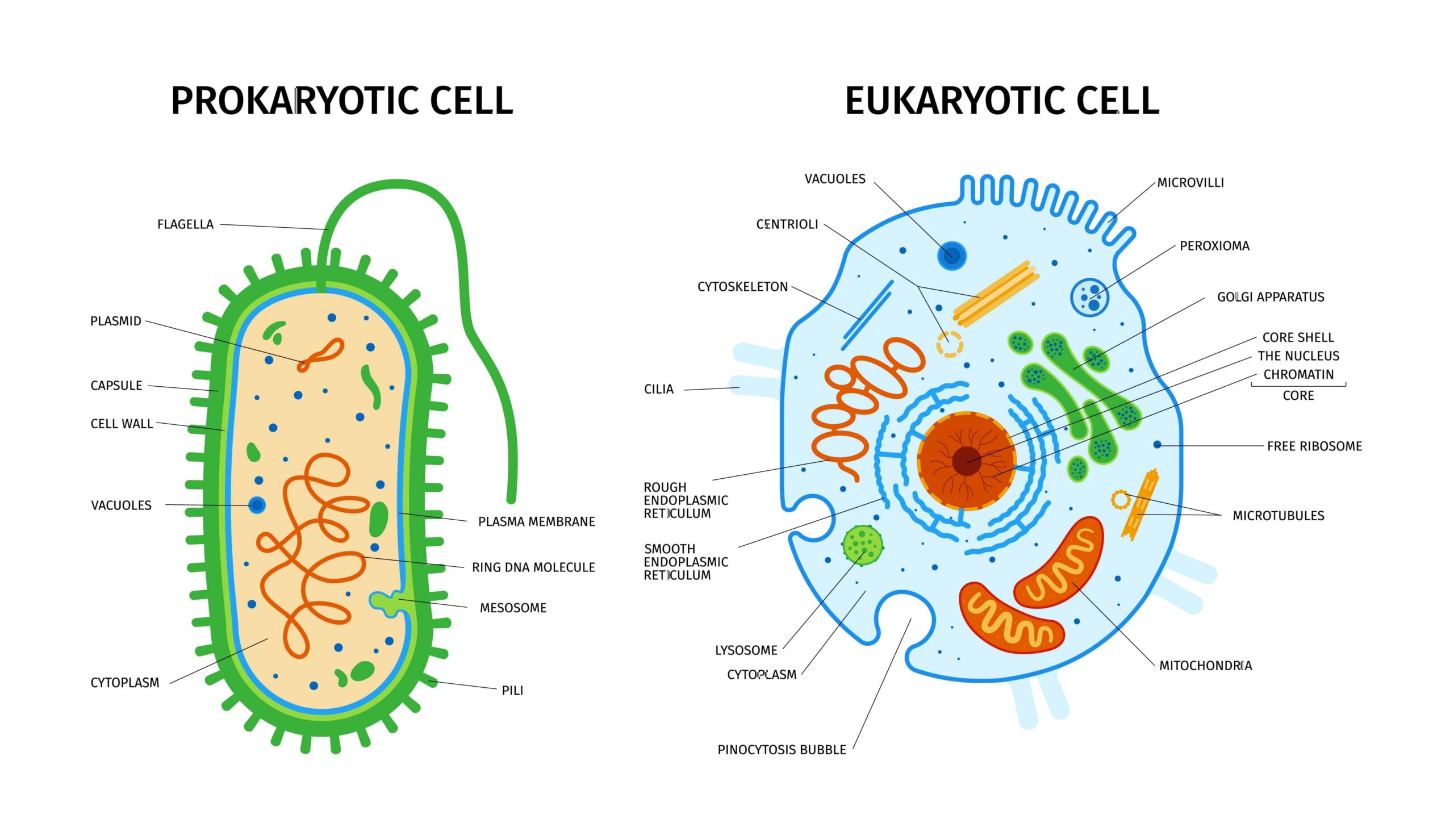
Abiogenesis:
Researchers Solve Puzzle of Origin of Life on Earth
First cells on ancient Earth may have emerged because building blocks of proteins stabilized membranes.
Life on Earth arose about 4 billion years ago when the first cells formed within a primordial soup of complex, carbon-rich chemical compounds.
These cells faced a chemical conundrum. They needed particular ions from the soup in order to perform basic functions. But those charged ions would have disrupted the simple membranes that encapsulated the cells.
A team of researchers at the University of Washington has solved this puzzle using only molecules that would have been present on the early Earth. Using cell-sized, fluid-filled compartments surrounded by membranes made of fatty acid molecules, the team discovered that amino acids, the building blocks of proteins, can stabilize membranes against magnesium ions. Their results set the stage for the first cells to encode their genetic information in RNA, a molecule related to DNA that requires magnesium for its production while maintaining the stability of the membrane.
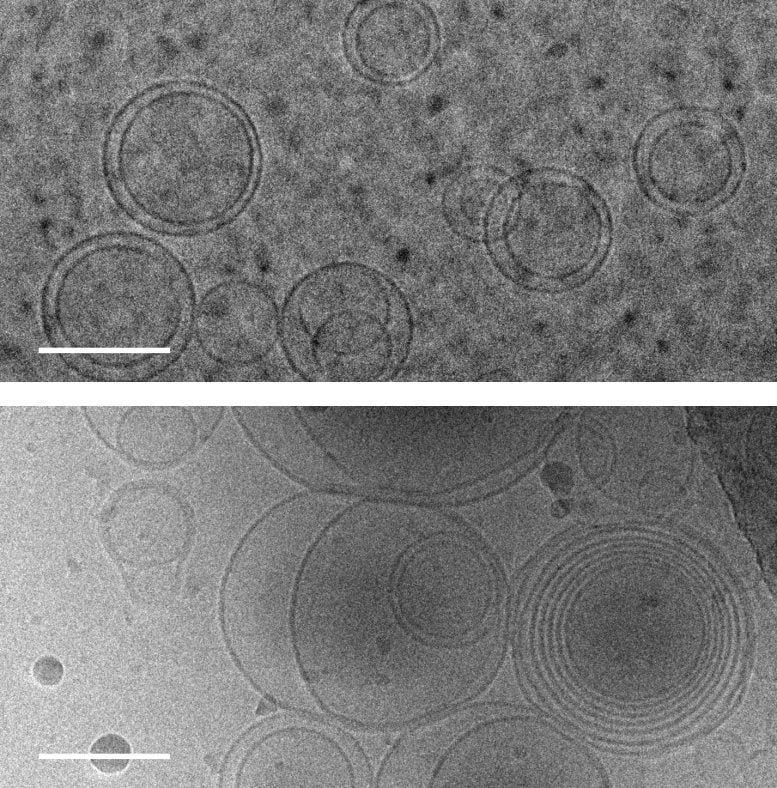
Images of membranes (circles) taken using transmission electron cryomicroscopy. Top: membranes in a solution that contains no amino acids. Bottom: membranes in a solution containing serine, an amino acid, which triggers membranes to form multiple layers of concentric membranes. Scale bars: 100 nanometers. Credit: Alex Mileant/Caitlin Cornell
Scientists Reproduce Origins of Life on Ocean Floor
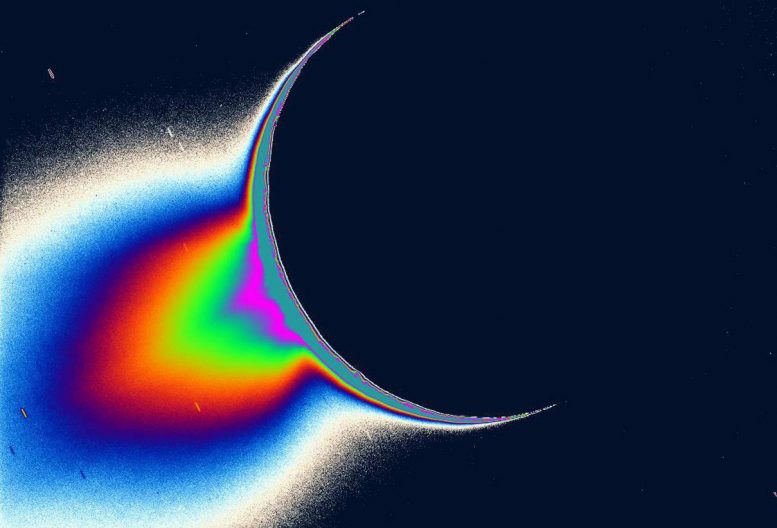
An image of Saturn’s moon Enceladus backlit by the Sun, taken by the Cassini mission. The false color tail shows jets of icy particles and water that spray into space from an ocean that lies deep below the moon’s icy surface. Future missions could search for the ingredients for life in an ocean on an icy moon like Enceladus. Credit: NASA/JPL/Space Science Institute
Scientists have reproduced in the lab how the ingredients for life could have formed deep in the ocean 4 billion years ago. The results of the new study offer clues to how life started on Earth and where else in the cosmos we might find it.
Astrobiologist Laurie Barge and her team at NASA’s Jet Propulsion Laboratory in Pasadena, California, are working to recognize life on other planets by studying the origins of life here on Earth. Their research focuses on how the building blocks of life form in hydrothermal vents on the ocean floor.
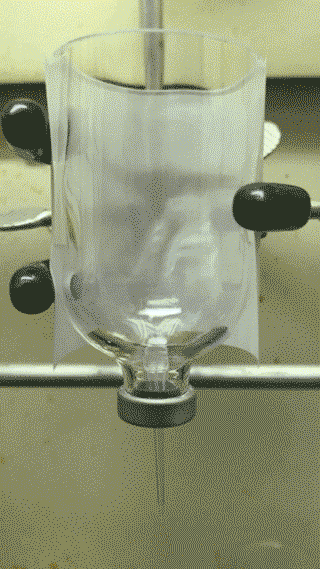
A time-lapse video of a miniature hydrothermal chimney forming in the lab, as it would in early Earth’s ocean. Natural vents can continue to form for thousands of years and grow to tens of yards (meters) in height. Credit: NASA/JPL-Caltech/Flores
To re-create hydrothermal vents in the lab, the team made their own miniature seafloors by filling beakers with mixtures that mimic Earth’s primordial ocean. These lab-based oceans act as nurseries for amino acids, organic compounds that are essential for life as we know it. Like Lego blocks, amino acids build on one another to form proteins, which make up all living things.
“Understanding how far you can go with just organics and minerals before you have an actual cell is really important for understanding what types of environments life could emerge from,” said Barge, the lead investigator and the first author of the new study, published in the journal Proceedings of the National Academy of Sciences. “Also, investigating how things like the atmosphere, the ocean, and the minerals in the vents all impact this can help you understand how likely this is to have occurred on another planet.”
Found around cracks in the seafloor, hydrothermal vents are places where natural chimneys form, releasing fluid heated below Earth’s crust. When these chimneys interact with the seawater around them, they create an environment that is in constant flux, which is necessary for life to evolve and change. This dark, warm environment fed by chemical energy from Earth may be the key to how life could form on worlds farther out in our solar system, far from the heat of the Sun.
“If we have these hydrothermal vents here on Earth, possibly similar reactions could occur on other planets,” said JPL’s Erika Flores, co-author of the new study.
https://www.youtube.com/embed/5Up8CHxL3uY?feature=oembed
Hydrothermal vents are places in the seafloor where warm water from under the Earth’s crust mixes with near-freezing seawater. These vents form natural chimneys, which play host to all kinds of ocean life. Credit: MARUM/University of Bremen/NOAA-Pacific Marine Environmental Laboratory
Barge and Flores used ingredients commonly found in early Earth’s ocean in their experiments. They combined water, minerals, and the “precursor” molecules pyruvate and ammonia, which are needed to start the formation of amino acids. They tested their hypothesis by heating the solution to 158 degrees Fahrenheit (70 degrees Celsius) — the same temperature found near a hydrothermal vent — and adjusting the pH to mimic the alkaline environment. They also removed the oxygen from the mixture because, unlike today, early Earth had very little oxygen in its ocean. The team additionally used the mineral iron hydroxide, or “green rust,” which was abundant on early Earth.
The green rust reacted with small amounts of oxygen that the team injected into the solution, producing the amino acid alanine and the alpha hydroxy acid lactate. Alpha hydroxy acids are byproducts of amino acid reactions, but some scientists theorize they too could combine to form more complex organic molecules that could lead to life.
“We’ve shown that in geological conditions similar to early Earth, and maybe to other planets, we can form amino acids and alpha hydroxy acids from a simple reaction under mild conditions that would have existed on the seafloor,” said Barge.
Barge’s creation of amino acids and alpha hydroxy acids in the lab is the culmination of nine years of research into the origins of life. Past studies looked at whether the right ingredients for life are found in hydrothermal vents, and how much energy those vents can generate (enough to power a light bulb). But this new study is the first time her team has watched an environment very similar to a hydrothermal vent drive an organic reaction. Barge and her team will continue to study these reactions in anticipation of finding more ingredients for life and creating more complex molecules. Step by step, she’s slowly inching her way up the chain of life.
This line of research is important as scientists study worlds in our solar system and beyond that may host habitable environments. Jupiter’s moon Europa and Saturn’s moon Enceladus, for example, could have hydrothermal vents in oceans beneath their icy crusts. Understanding how life could start in an ocean without sunlight would assist scientists in designing future exploration missions, as well as experiments that could dig under the ice to search for evidence of amino acids or other biological molecules.
Read Also: Clock behavior at High Velocities — Temporal Flux?
Future Mars missions could return samples from the Red Planet’s rusty surface, which may reveal evidence of amino acids formed by iron minerals and ancient water. Exoplanets — worlds beyond our reach but still within the realm of our telescopes — may have signatures of life in their atmospheres that could be revealed in the future.
“We don’t have concrete evidence of life elsewhere yet,” said Barge. “But understanding the conditions that are required for life’s origin can help narrow down the places that we think life could exist.”
Reference: “Redox and pH gradients drive amino acid synthesis in iron oxyhydroxide mineral systems” by Laura M. Barge, Erika Flores, Marc M. Baum, David G. VanderVelde and Michael J. Russell, 25 February 2019, PNAS.
DOI:10.1073/pnas.1812098116
For more information about Abiogenesis: https://en.wikipedia.org/wiki/Abiogenesis
RNA evolution
Life’s First Spark Re-Created in the Laboratory
A fundamental but elusive step in the early evolution of life on Earth has been replicated in a laboratory. Researchers synthesized the basic ingredients of RNA, a molecule from which the simplest self-replicating structures are made. Until now, they couldn’t explain how these ingredients might have formed.
It’s like molecular choreography, where the molecules choreograph their own behavior
John Sutherland of the University of Manchester, co-author of a study in Nature Wednesday.
RNA is now found in living cells, where it carries information between genes and protein-manufacturing cellular components. Scientists think RNA existed early in Earth’s history, providing a necessary intermediate platform between pre-biotic chemicals and DNA, its double-stranded, more-stable descendant.
However, though researchers have been able to show how RNA’s component molecules, called ribonucleotides, could assemble into RNA, their many attempts to synthesize these ribonucleotides have failed. No matter how they combined the ingredients — a sugar, a phosphate, and one of four different nitrogenous molecules, or nucleobases — ribonucleotides just wouldn’t form.
More Information:
https://astrobiology.nasa.gov/news/rna-origins-in-sheets-of-clay/
Origin and Evolution of DNA and DNA Replication Machineries
RNA was the first genetic molecule (RNA self-edits)
A newly made RNA strand bolsters ideas about how life on Earth began
Scientists crack how primordial life on Earth might have replicated itself
How Did Life Begin? New Study Reveals Life in the Universe Could Be Common
Is life a gamble? Scientist models universe to find out
First life: The search for the first replicator
Did Life Emerge in the “Primordial Soup” via DNA or RNA? Surprising Answer From New Research


Pingback: Where do science and philosophy meet? - InsightsHub